![]() c.v. Artworks by Sen + Sonja Latest work Installations Arranged by Medium Designed by Sonja
c.v. Artworks by Sen + Sonja Latest work Installations Arranged by Medium Designed by Sonja
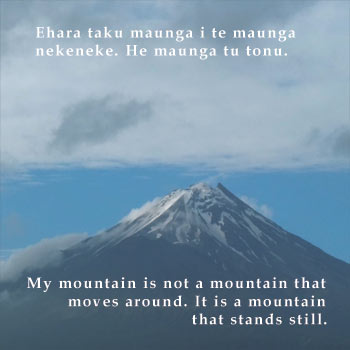
Details from a 6 panel flyer.
The text (whakatauki) says in full, "Ehara taku maunga i te
maunga nekeneke, he maunga tű tonu a Hikurangi."
Te Kani-a-Takirau (Uawa - Tolaga Bay) paramount chief of the
Tairāwhiti region made this statement in the 1850s in response
to Tamihana Te Rauparaha (Te Rauparaha's son) who played a
key role in establishing the Kingitanga (1858).
He and Matene Te Whiwhi and others asked eligible Chiefs (Ariki)
if they would be willing to head a national monarchy.
Te Kani-a-Takirau's response not only references his lineage to
the tribes to whom he was speaking: ("You are correct, I am a
chief, a descendant of your ancestors. However, the problem is
that my pedigree adheres to only one people. My mountain,
Hikurangi, does not move. I do not agree."
Taranaki (pictured above) was a mountain that according to
tradition did move and moved from the Kahui Maunga
(mountains in and around the central plateau of the north island
(the tribal areas of those Te Kani-a-Takirau was addressing).
He also stated that he was not appropriate for the role because
it wouldn't be possible for him to be impartial (he piri taha tahi).
This text can also be read as a reference to stability, knowing that
one's mountain (a reference to one's heritage) does not move
(can be relied upon) as well as to why he chose not to move
from his homeland (meaning being responsible to the duties of
his homeland).
In placing this text over an image of Taranaki I'm changing the
original context not just because this is another mountain than
the one referred to originally, but because ironically Mount
Taranaki was a mountain that did move.
And likewise although the biographical is a starting point for
the "Home Within" videos, the narratives and themes move
on from this.
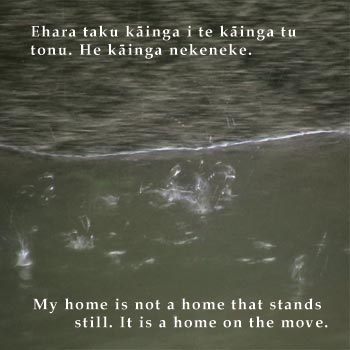
Reo Māori: Toroa Pohatu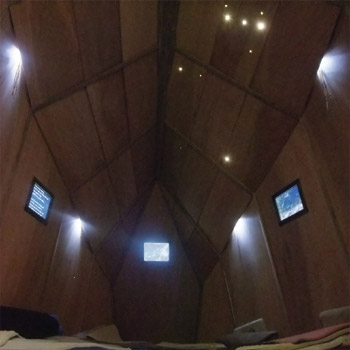
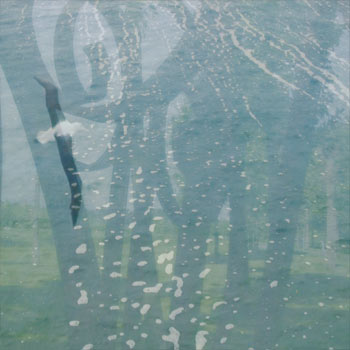
Still from The
Moving Heart | Te Ngākau Nekeneke
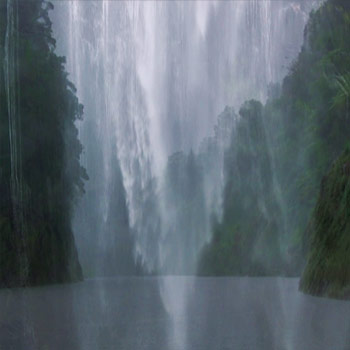
Still from The Two Lands
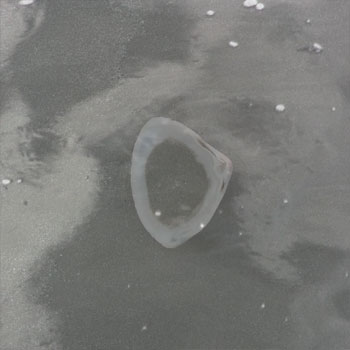
Still from The Two Lands
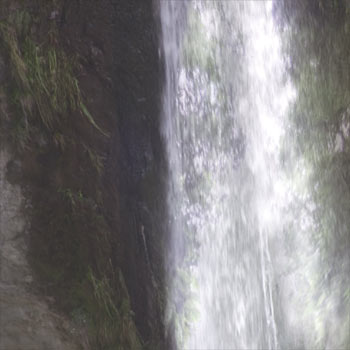
Still from The Tears of Rangi | Ngā Roimata o Rangi
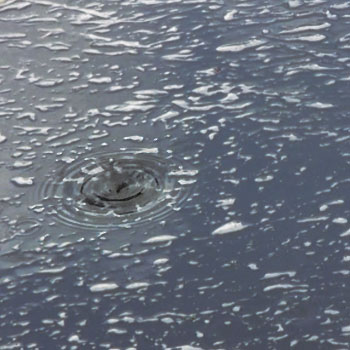
Still from The Tears of Rangi | Ngā Roimata o Rangi,
one of the five videos inside the installation.
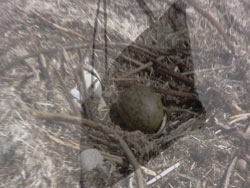
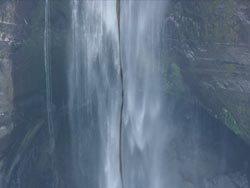
14 September - 7 October 2011
Monday - Saturday, 10-7 p.m.
Cumhuriyet Gallery, Taksim Square, Istanbul
Skip the preamble to see what we built
Biography as integrated system
A system, even an integrated system, is not a seamless continuum: what makes it a system is that it consists of distinct interrelated parts. A culture - a symbol system - is one integrated system. The human person too is an integrated system (memory, hopes, relationships, reason and spirituality), and so is an individual biography. A person, seen as a system, is the microcosm to the natural world's macrocosm, which contains elemental systems - of water, wind and earth, and of the biosphere.
Kāinga a roto (Home Within) is an art-system, consisting of five distinct videos, soundscapes, music, lighting and shadows, and a physical space where visitors sit or lie close to the ground. This art-system is used to represent the complex system of a particular biography (a childhood in Taranaki), using a visual language composed of references to the natural world (water in particular, but also earth, wind
and bird life) influenced by New Zealand Colonial and Māori cultural values.
Each video is in itself a system of allusions and symbols, relating the personal to the environmental, cultural and cosmic systems.
For example, the video,
The
Moving Heart | Te Ngākau Nekeneke,
featuring the song Whanau Marama by Toroa
Pohatu refers to the comets, which can be seen as "Ariki" (Leaders or Chiefs) of the night. These
bodies of water in the sky are signs of significance and harbingers of peace.
Toroa also sings of Auahituroa's (a personification of comets) chiefly feathers (the albatross feathers worn by Taranaki iwi).
The visuals compliment this with two animations of
circling koru which move comet-like against images of manaia (bird-human) carvings, albatross in flight, the flow and ebb of the sea and a 'north-south-east-west' sculpture embodying koru (spiral) and mango-pare (hammerhead shark) motifs.
Birds live on water, in the air and on the land and feature in all of the videos as charged symbols whose value is indicated by text or sound. However in all the videos and sounds,
the world of Tangaroa, the flow of water as a force and vehicle for life, dominates.
A Māori person begins an introduction in reference to the natural elements, the land, the sky, the mountain, to acknowledge the relevance of the natural world in one's cultural world. These videos, which run continuously without titles or credits, address themes of attachment and detachment, and the place of one's emotional (inner) world/s in the world around.
Window-like videos show the beauty of New Zealand rivers, forests, beaches and farmlands. However beauty is mixed with pain. Texts and voice tell of traumatic incidents from a childhood in rural Taranaki. In the video The two lands the protagonist makes a second land separate from her family, a land on the move.
This phrase references the Māori proverb:
The Māori proverb refers to the importance of tūrangawaewae (one's standing place - one's origins -
one's family).
'Home' in the context of this 'integrated art system' is now like a vessel, a home on the move.
Movement is evoked in the sounds of water from five locations which constantly change focus
and intensity with the piano, singing, voices, birdcalls and other
sounds.
The video images weave between various worlds - the world of Tane (the forest and the land), the world of Tawhirimatea (the
winds) represented by sounds of breathing and signs of the wind, patterns on the surface of water, and a storm.
The video The Tears of Rangi expresses gratitude for the ability to feel, while the video Heart of the Land consists of mesmeric
shots of water taken from a waka (canoe).
Water doesn't stand still, and we are carried along, by the flow, the sounds, by a narrative that is sometimes personal and traumatic - at
other times juxtaposed against theoretical text.
Within this space we are invited to sit low to the ground and to feel the undulations created by numerous mats. Each mat is like a
mobile tūrangawaewae that is part of a modular system. Each mat which can be moved around is a unit, and yet is a tangible part of the whole, as a layer over and under other layers.
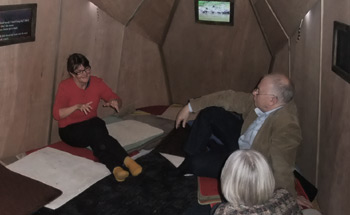
Detail showing the videos, The Dark Valley and The Heart of the Land | Te Ngākau o te whenua with piupiu
courtesy of Ngā Iwi o Ngati Hinemanu / Ngāti Paki + Jerome Kavanagh. Museum Beelden aan Zee, Scheveningen, The Netherlands.
Many people have contributed to Kāinga a roto (Home Within), in particular for this rendition, Toroa Pohatu and Sen McGlinn.
The Kāinga DVD page lists details and credits
We were forced to go outside the 'container' of our expectations because we couldn't find wood and other materials in shops. In being forced to look elsewhere, we started to notice wooden planks or crates stacked on the street and found that if we waited, a crowd soon formed around us and we then bargained for a price.
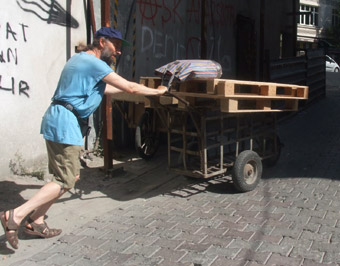
August 28th: Sen with 3 wooden crates using a wagon lent to us
approaches Taksim Square.
As soon as we started to look differently at the streets, we found wood and cardboard and even the nails, which we pulled out of packing.
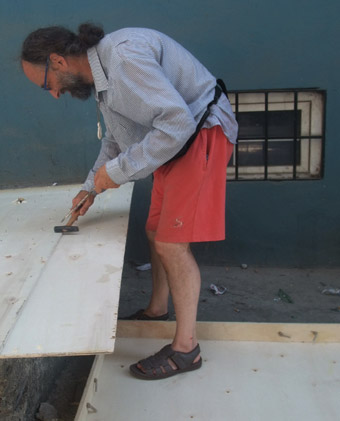
Aug 31st: When we found this huge packing case it made our day. We not only got nails but this became the facade for inside the "kāinga" as well the support for the curved beams.
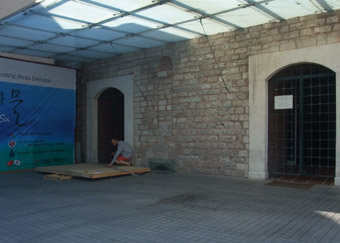
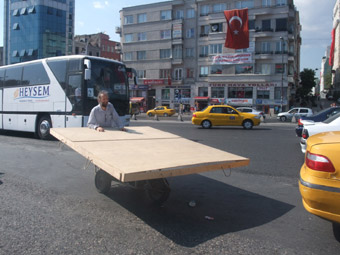
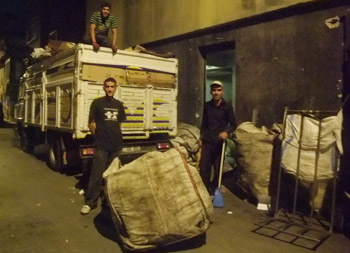
They gave us some cardboard.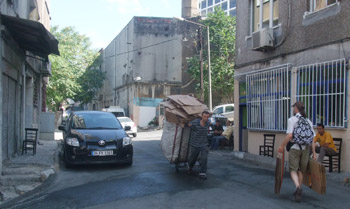
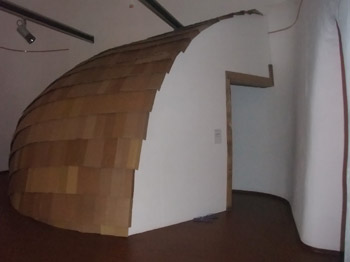
The roof and curved wall is made out of cardboard.
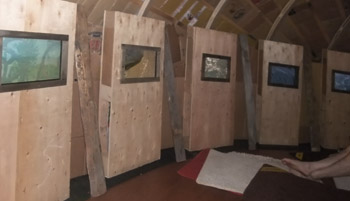
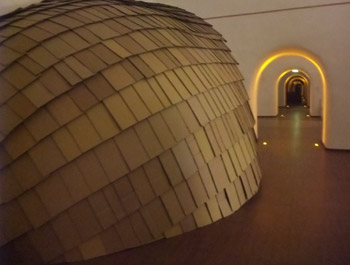
We got most of these materials from a gypsy area (Dolapdere) of Istanbul and then reshaped and reused these which became the 'container' aspect of our installation. Sometimes we bargained with those who make a living from recycling what they find on the streets of Istanbul and sometimes they gave us cardboard. Other times the residents were happy to see us dismantel and take the 'rubbish' away.
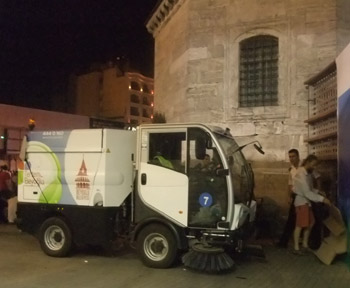
Then the city sanitation department noticed what we were doing and also helped us to get some of the cardboard. We chose to use cardboard because wood proved too difficult to find and during our walks we noticed how cardboard was being collected and recycled and so chose to 'reshape' these boxes into panels reminescent of scales or shingles. So the work ended up incorporating signs of the uncontainable nature of urban Istanbul.
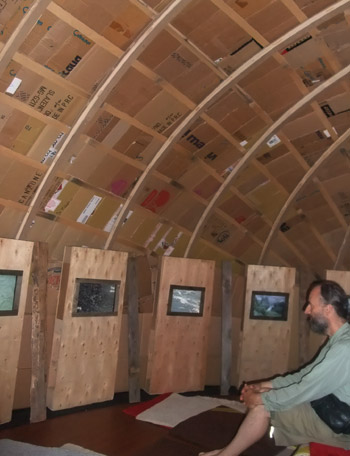
More views during the ISEA Istanbul exhibition >>
1 min. video on youtube about getting the materials from the streets of Istanbul
To my review of this exhbition